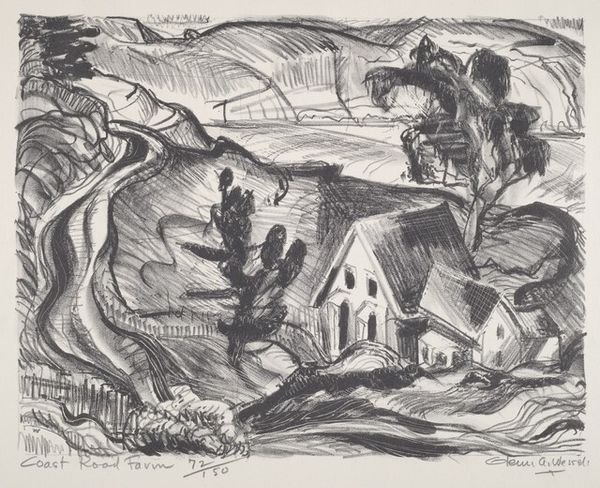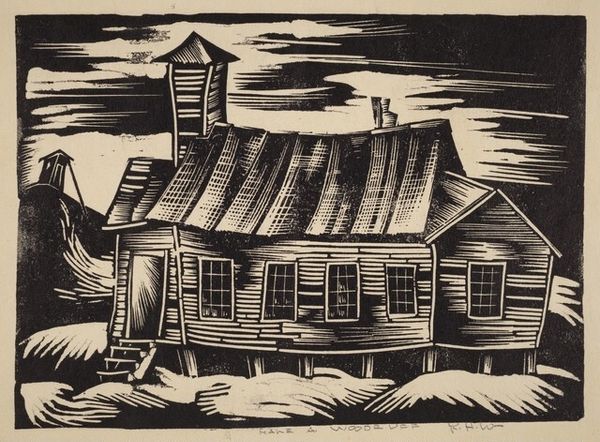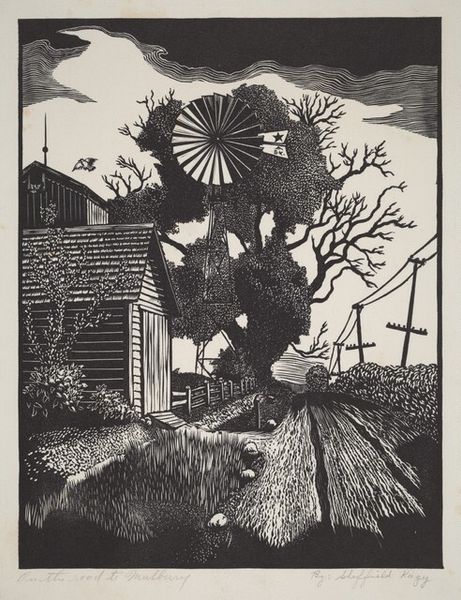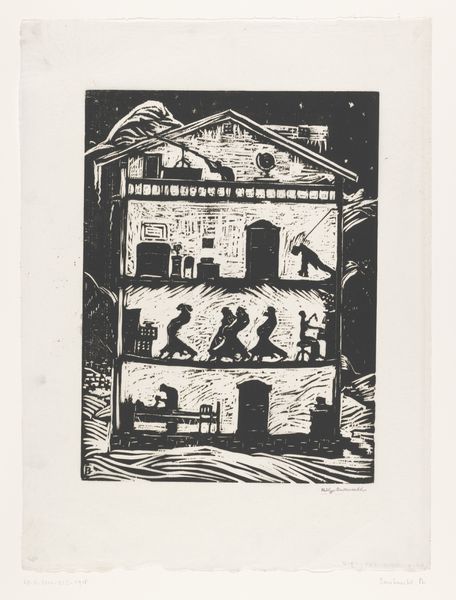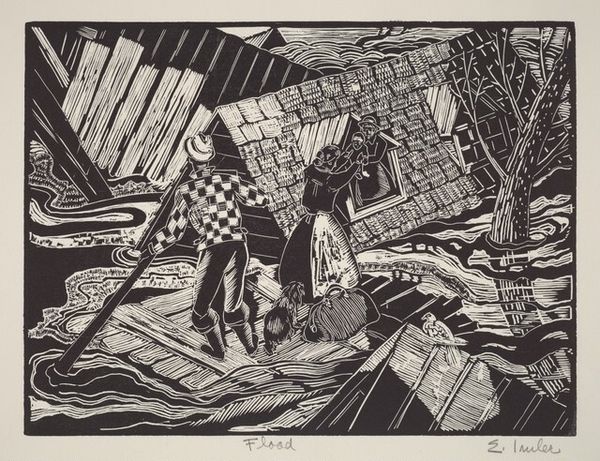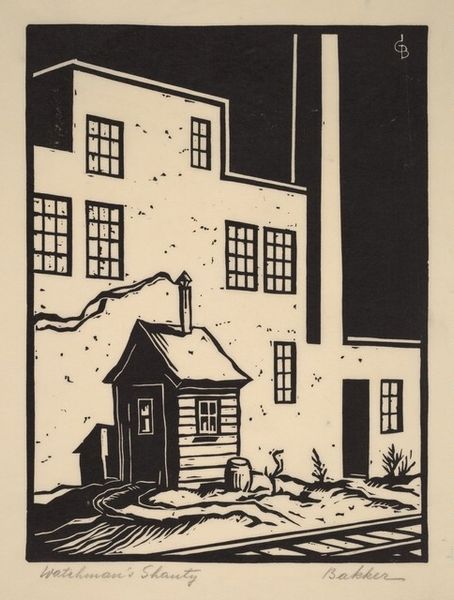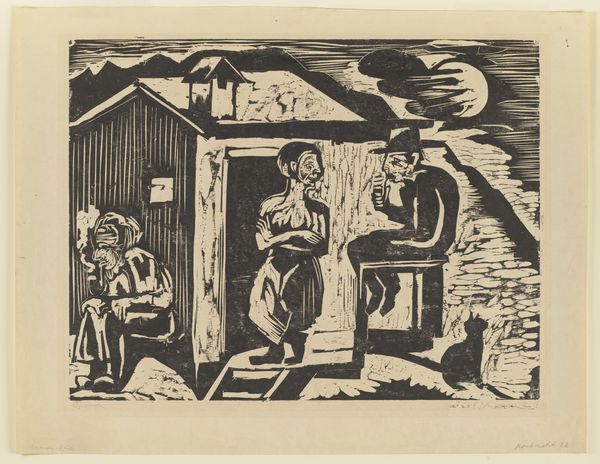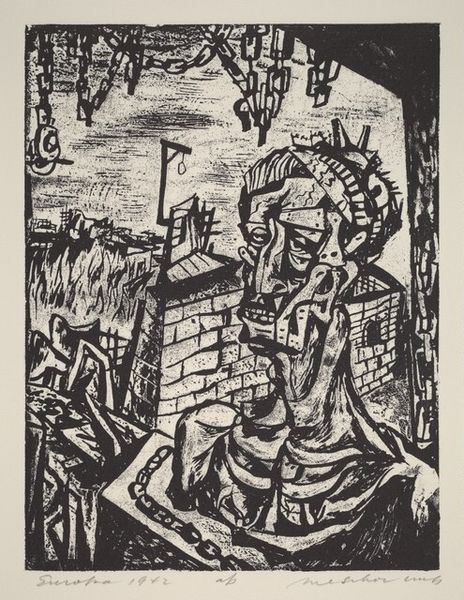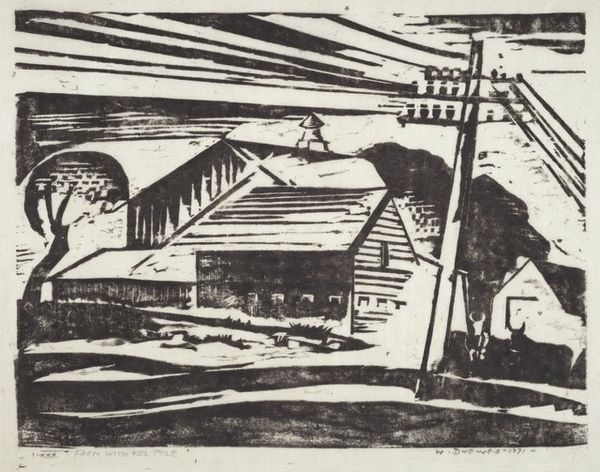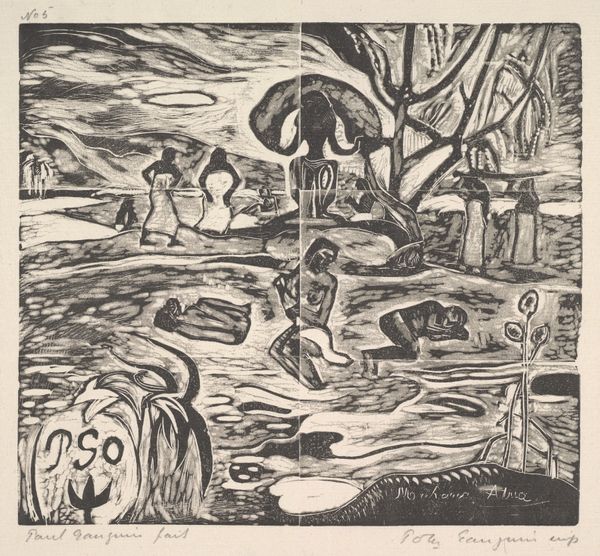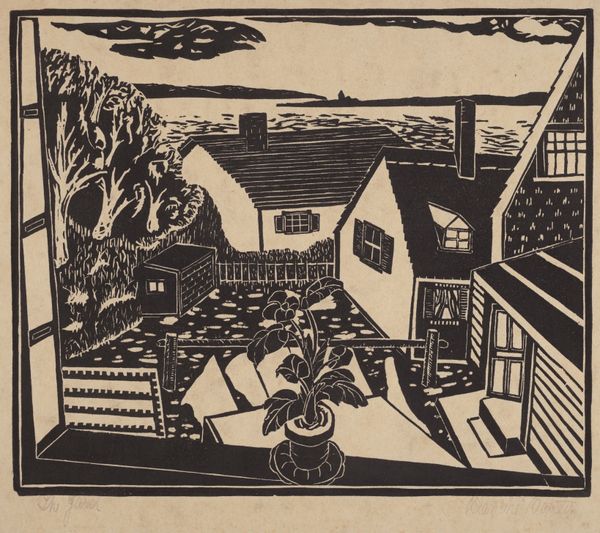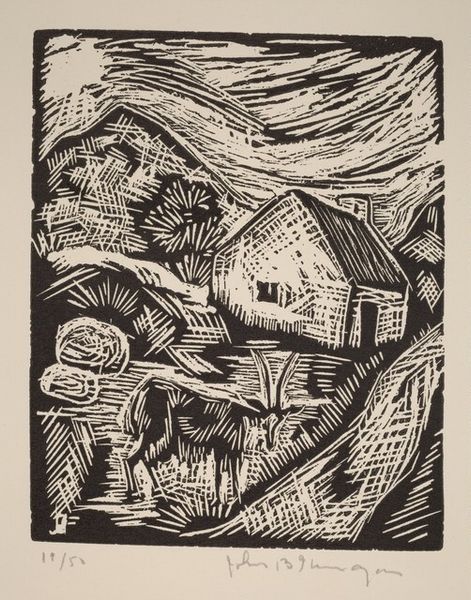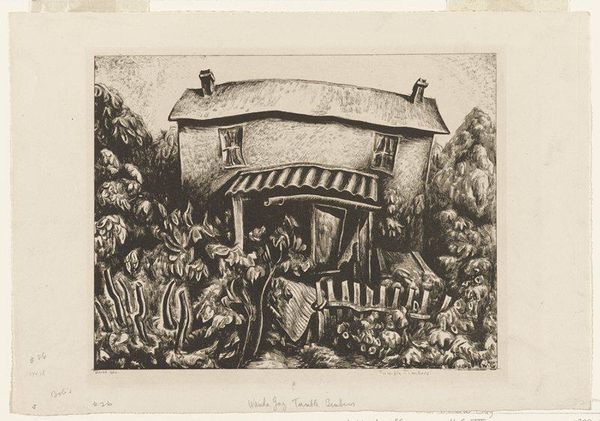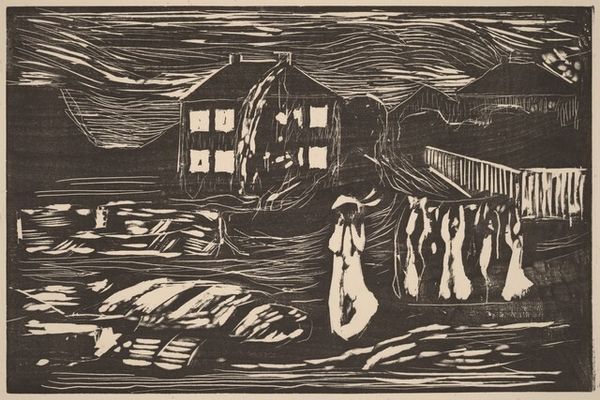
print, woodcut
#
ink drawing
#
narrative-art
# print
#
landscape
#
woodcut
#
history-painting
Dimensions: image: 178 x 241 mm paper: 279 x 330 mm
Copyright: National Gallery of Art: CC0 1.0
Editor: William Harold Smith's 1941 woodcut print, "Tearing Down the Old Jail," really struck me. There's a somber feeling despite all the destruction, like a stage play unfolding in stark black and white. The sharp contrast almost feels… hopeful? What do you see in it? Curator: You've picked up on the dramatic tension brilliantly. To me, this isn't just demolition; it's about the weight of history. Notice how Smith frames the scene? It is a hand, a fist even, as if holding and shaping destiny. I wonder, could that jail represent not just physical imprisonment but also old ideas and ways of thinking? Does tearing it down then open new opportunities? Editor: Oh, I hadn't considered the hand! I was focused on the men at work. So you’re suggesting the artist saw this as progress, not just destruction? Curator: Precisely. Woodcut is a rather brutal medium. Carving away at the block. Each gouge is permanent. The image almost vibrates with that pent up energy, wouldn’t you agree? Smith must have felt this change quite acutely himself, don't you think? Did the promise of progress deliver? A question that still rings true, does it not? Editor: Definitely food for thought. I came in seeing a demolition scene, and now I'm contemplating progress, power, and the past, all in a single print. Amazing! Curator: Exactly! And sometimes art is about discovering the questions, not necessarily finding all the answers. Thank you for helping me remember how wonderfully messy and alive it is to tear things down to build them up, perhaps differently, but to do so anyway.
Comments
No comments
Be the first to comment and join the conversation on the ultimate creative platform.
